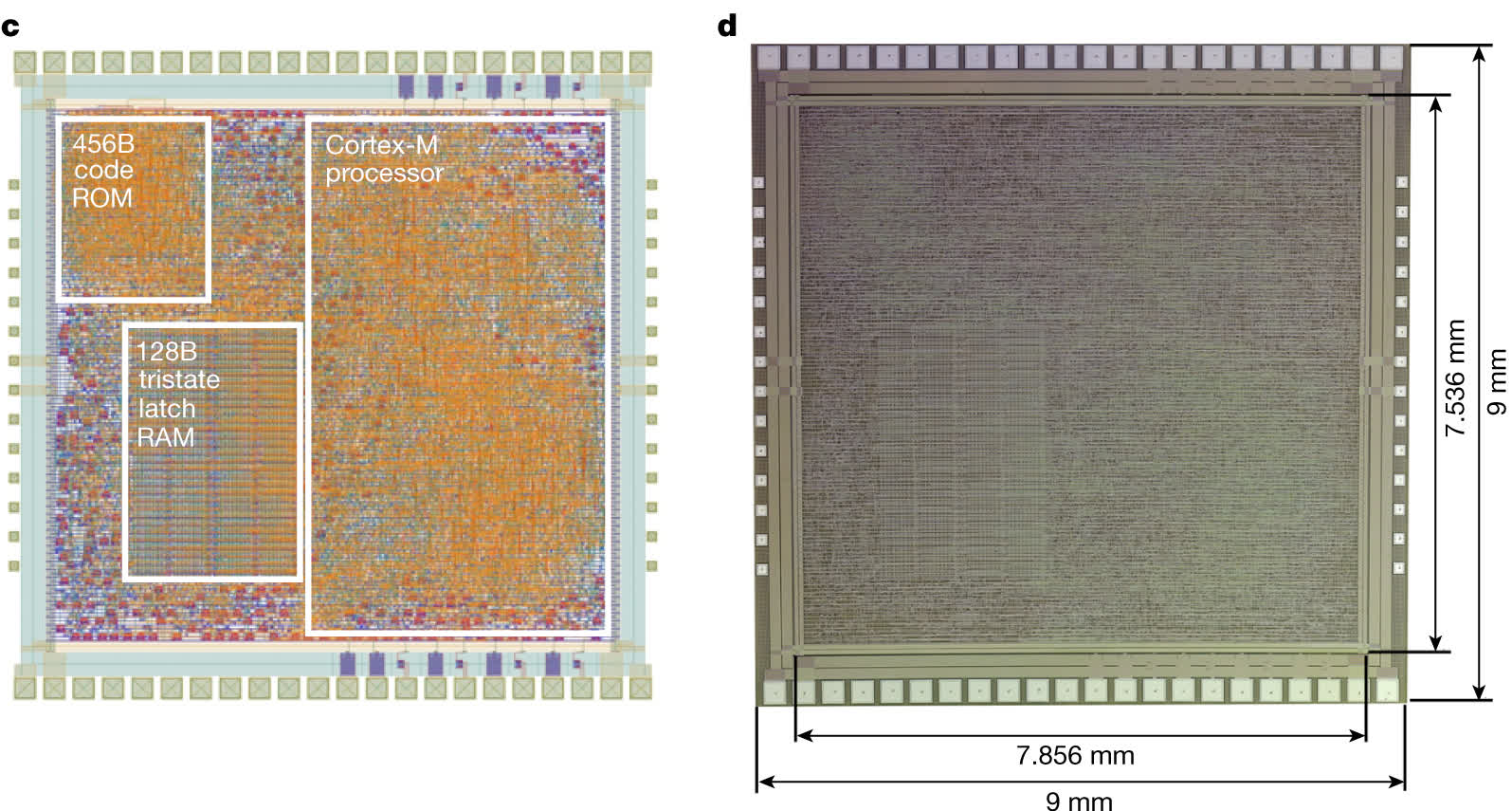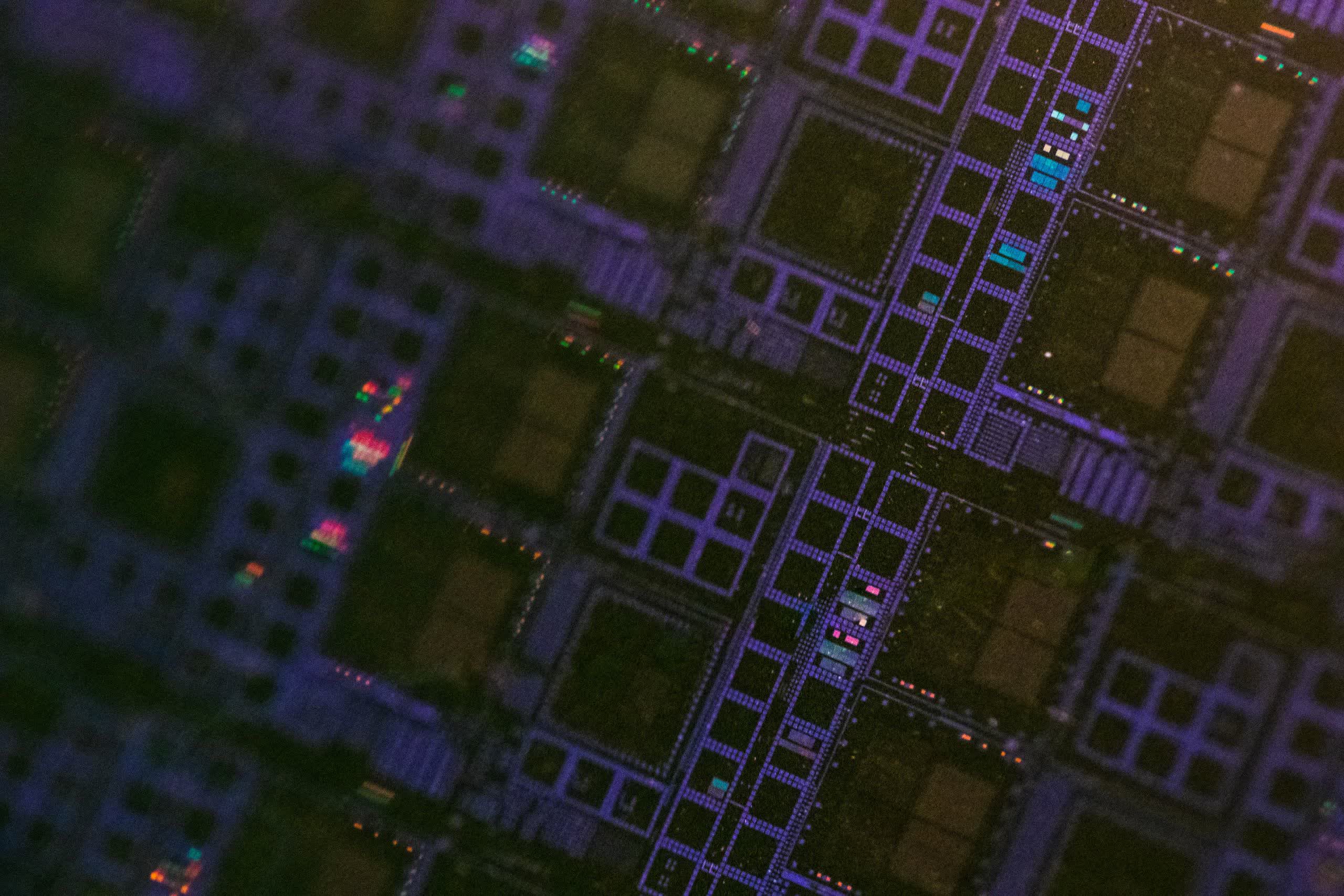Why it matters: As you can probably attest, modern wearables can be slapped on a wrist or slotted in an ear without a problem. But they're not subtle enough, neither in their design or cost, to be part of everyday items like clothing, milk cartons, food packages, or bandages - Arm's examples of places where their new "natively flexible" processor might belong.
In a new paper published in Nature, Arm researchers explain how they ported a standard 32-bit Arm processor design onto a plastic substrate that they say is bendy. It's more of a proof-of-concept than a working prototype, but it nevertheless demonstrates some significant firsts.
Arm fittingly call their creation "PlasticARM." It uses metal-oxide thin-fin transistor technology (TFT) fabricated on a polyimide substrate. Polyimide is a durable type of thermoplastic that's mildly flexible. Arm's team wasn't willing to put their processor's flexibility to the test, but I would estimate that it lands somewhere between a watchband and a pen on the bendiness scale.
PlasticARM's package is roughly the size of a fingernail. It has 18,344 gate equivalents spread over an active surface area of 59 mm2.
About half of its area is a 32-bit Arm Cortex-M0+ processor, and the rest is mostly 128 B of RAM and 456 B of ROM. It is a full system-on-a-chip (SoC).

One of the reasons why the researchers chose to use the Cortex-M0+ design was because it has a mature ecosystem, but the PlasticARM can't make much use of it yet. Its storage was configured to be read-only to streamline its operation, although a reprogrammable model is in development.
It has other shortcomings, too. Under normal circumstances, a Cortex core has registers inside itself to store regularly accessed data, but they were offloaded to a section of the RAM for simplification purposes. It's also limited to 29 kHz while most Cortex-M processors measure their speed in MHz.
Most of PlasticARM's problems will soon be solvable but one that will persist is power consumption. In testing, the processor consumed 20 milliwatts, which is several orders of magnitude beyond the standard range of a Cortex-M processor. Arm's team expects to be able to shrink the disparity with future iterations, but says that low efficiency is an intractable quality of TFT designs.
"It won't be fast, it won't be energy efficient, but if I'm going to put it on a lettuce to track shelf life, that's the idea," Arm's James Myers told New Scientist. But "we're still looking for applications, just like the original processor guys in the 1970s."
Image credit: Jason Leung
